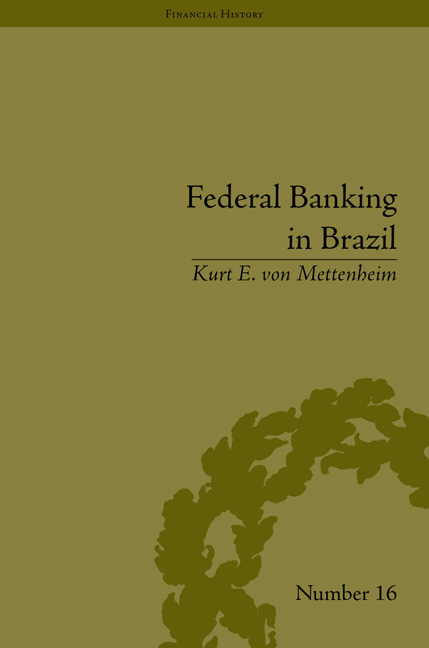Book contents
- Frontmatter
- CONTENTS
- Acknowledgements
- List of Figures and Tables
- Introduction
- 1 Government Banking Theory
- 2 Bank Change in Brazil
- 3 The Banco do Brasil – with Maria Antonieta del Tedesco Lins
- 4 The Caixa Economica Federal (Federal Savings Bank)
- 5 The Banco Nacional de Desenvolvimento Econômico e Social (National Bank for Economic and Social Development, BNDES)
- Conclusion
- Notes
- Works Cited
- Index
2 - Bank Change in Brazil
- Frontmatter
- CONTENTS
- Acknowledgements
- List of Figures and Tables
- Introduction
- 1 Government Banking Theory
- 2 Bank Change in Brazil
- 3 The Banco do Brasil – with Maria Antonieta del Tedesco Lins
- 4 The Caixa Economica Federal (Federal Savings Bank)
- 5 The Banco Nacional de Desenvolvimento Econômico e Social (National Bank for Economic and Social Development, BNDES)
- Conclusion
- Notes
- Works Cited
- Index
Summary
In Chapter 1 it is argued that government banks provide policy alternatives for economic management and social inclusion while retaining competitive advantages over private and foreign banks. This chapter turns to evidence from Brazil since price stability, transition from military rule and liberalization of the industry. In April 1994, the Real Plan ended over a decade of inertial inflation and launched then Finance Minister Cardoso to win the presidency for the coalition between the Partido da Social Democracia Brasileira (Party of Brazilian Social Democracy, PSDB) and Partido da Frente Liberal (Liberal Front Party, PFL) in the first national elections held since transition from military rule. In 1995, President Cardoso's coalition government reduced protection of domestic banking set in the 1988 Constitution, permitted foreign participation in privatization auctions and provided incentives for foreign investment in financial industries. From 1994–2002, foreign investment in banking and finance reached US$19.8 billion (15 per cent of total direct foreign investment). However, instead of leading to the predominance of foreign and private banks, a new division of financial labour emerged. Privatizations reduced the presence of state government banks. Liberalization increased the importance of foreign banks. However, the anomaly for liberal theory is that federal banks 1) were capitalized 2) were challenged to pursue new strategies and policies and 3) have provided policy options and competed successfully since opening the industry.
This chapter explores in turn these elements of anomaly.
- Type
- Chapter
- Information
- Federal Banking in BrazilPolicies and Competitive Advantages, pp. 29 - 58Publisher: Pickering & ChattoFirst published in: 2014

